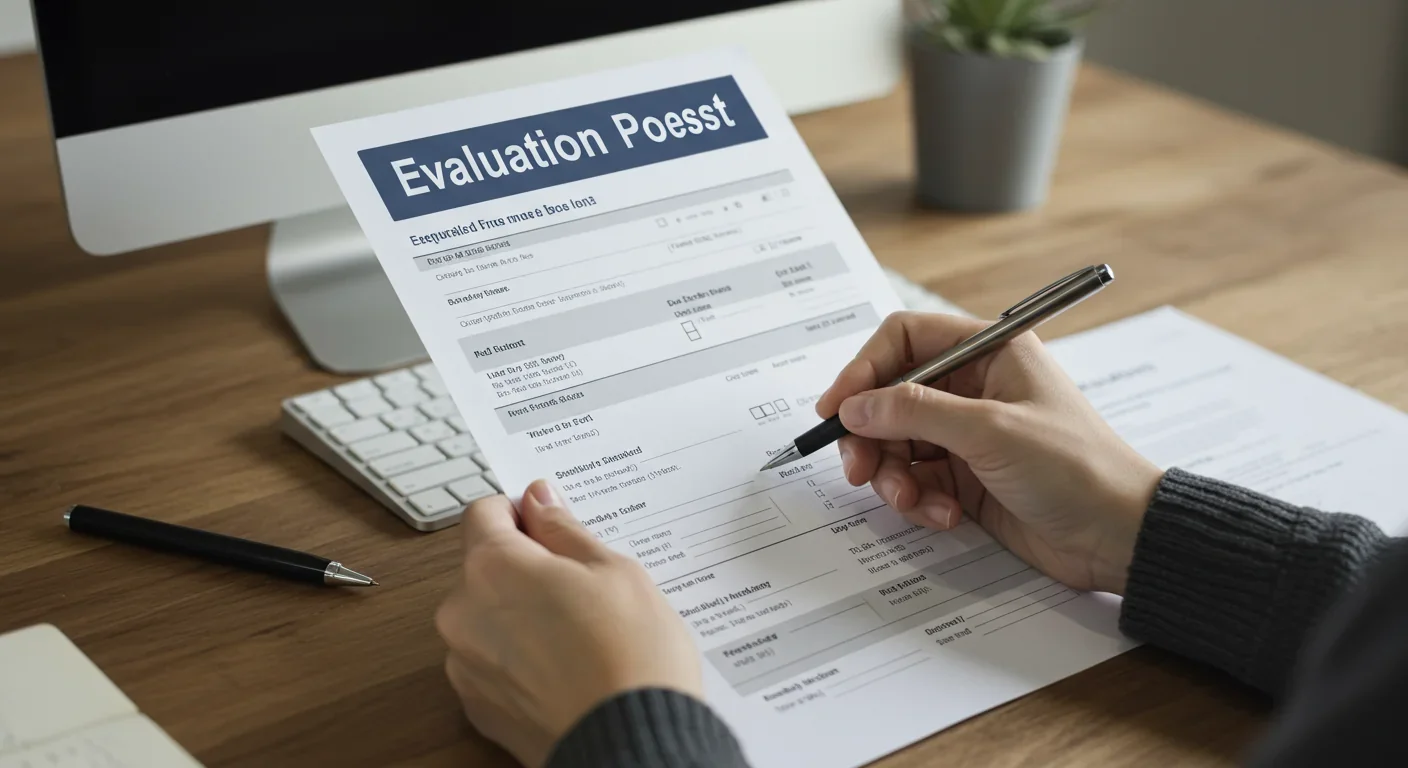Why Your Brain Is Hardwired to Lose Money

TL;DR: The halo effect—where physical attractiveness unconsciously shapes judgments of competence and character—influences hiring, education, and legal outcomes. Evidence-based interventions like blind evaluation and structured processes can reduce this pervasive bias.

What if the future of fairness depends on confronting a truth we've known but rarely acknowledged? Within the next decade, artificial intelligence systems will increasingly make decisions about hiring, lending, and even criminal sentencing—decisions that could either perpetuate or finally break free from one of humanity's most persistent biases. Because while we like to think we judge people on merit alone, research reveals a troubling pattern: physical attractiveness systematically influences how we evaluate competence, intelligence, and character across nearly every domain of life.
This phenomenon has a name. Psychologists call it the halo effect, and it's been quietly shaping human judgment since long before Edward Thorndike first identified and named it in 1920. But what started as an observation about military officers rating their subordinates has evolved into one of the most extensively documented cognitive biases in behavioral science—one with profound implications for how we build a more equitable society.
The halo effect operates on a deceptively simple principle: when we perceive someone as attractive, we automatically assume they possess other positive attributes, from intelligence and kindness to competence and trustworthiness. It's not a conscious decision. Instead, our brains take a mental shortcut, extrapolating from one salient feature to create an entire impression.
Thorndike discovered this pattern while analyzing how military officers rated their soldiers on various qualities. He found that ratings on one trait—say, physical appearance—consistently influenced ratings on completely unrelated characteristics like intelligence and leadership ability. The correlations were surprisingly strong, ranging from 0.28 to 0.39, and as Thorndike noted, they were "too high and too even" to be coincidental.
Our brains take mental shortcuts, extrapolating from appearance to create entire impressions of character, intelligence, and competence—often within seconds of meeting someone.
Nearly a century later, a 2023 study of 2,748 participants confirmed just how powerful this bias remains. Researchers found that simply applying a beauty filter to photos led to significantly higher ratings across multiple dimensions: intelligence (.30 correlation), trustworthiness (.20), sociability (.39), and happiness (.39). The implications are stark. We're not just slightly influenced by appearance—we're fundamentally reshaping our perception of who people are based on how they look.
What makes the halo effect particularly insidious is its universality. It doesn't require training or reinforcement. Studies published in the Journal of Personality and Social Psychology found that people automatically associate physical attractiveness with positive personality traits like honesty and kindness, even when there's no logical connection. Another study in the Journal of Applied Psychology showed that employees rated highly on one dimension, such as job knowledge, were consistently rated highly on unrelated dimensions like communication skills and interpersonal relationships.

The laboratory findings translate into measurable consequences across every institution that shapes human opportunity. In education, where we like to believe grades reflect academic merit, research reveals a troubling pattern of bias. A comprehensive study analyzing over 168,000 course grades and controlling for academic ability found that attractive female students received systematically higher grades than their equally qualified but less attractive peers.
The effect was quantifiable: for female students, an increase of one standard deviation in attractiveness was associated with a 0.024 increase in grade on a 4.0 scale. Women classified as "less attractive" received average course grades 0.067 points lower than those in the "more attractive" and "average" categories. Interestingly, male students showed no significant relationship between physical attractiveness and grading, suggesting the bias operates differently across gender lines.
But here's where it gets intriguing: the bias almost completely disappeared in online courses. When physical appearance was removed from the equation, the grade penalty for "unattractive" women vanished. This finding hints at a potential pathway forward—structured environments that minimize visual cues might naturally reduce bias without requiring explicit intervention.
"The correlations were too high and too even."
— Edward L. Thorndike, describing his 1920 discovery of the halo effect
The legal system presents an even more troubling picture. Research by Efran in 1974 found that attractive defendants received less severe sentences than unattractive ones for the same crimes. This leniency bias persists today, with studies showing that physical appearance influences not just sentencing but also jury deliberations, bail decisions, and even police interactions.
Yet the bias isn't uniformly positive. When the crime itself relates to attractiveness—such as a swindle where appearance might have been used to deceive victims—the effect can reverse, with attractive defendants receiving harsher sentences. This suggests the halo effect isn't a fixed advantage but a context-dependent phenomenon that can amplify whatever narrative evaluators construct.
If you want to see the halo effect's economic impact, look no further than the hiring process. Approximately 75% of hiring managers make poor recruitment decisions due to cognitive biases like the halo effect, and the cost is substantial: a bad hire typically amounts to 30% of the role's annual salary.
The bias begins the moment a resume photo is viewed or a candidate walks into an interview. Studies confirm that conventionally attractive individuals gain advantages throughout the recruitment process, from initial screening to final offer negotiations. The effect is so strong that 89% of managers acknowledge they form quick judgments about candidates within just 15 minutes of an interview—a timeframe dominated by first impressions rather than substantive evaluation.

Physical appearance doesn't just affect hiring; it influences ongoing performance evaluations. Research indicates that physical attractiveness affects promotion decisions, pay raises, and even daily workplace interactions. Employees who fit conventional beauty standards often receive higher performance ratings even when objective metrics suggest equivalent or inferior performance compared to less attractive colleagues.
The flip side—what psychologists call the "horn effect"—can be equally damaging. Overweight candidates are significantly less likely to be hired, promoted, or given raises, regardless of their qualifications. A 2018 LinkedIn study found that 25% of overweight people reported being overlooked for job promotions or opportunities specifically due to appearance-based bias.
75% of hiring managers make poor recruitment decisions due to the halo effect, costing companies an average of 30% of the role's annual salary per bad hire.
Understanding why the halo effect persists despite our best intentions requires grappling with how human cognition evolved. Our brains are prediction machines, constantly making rapid assessments based on limited information. In ancestral environments, quick judgments about others could mean the difference between cooperation and conflict, safety and danger.
Physical attractiveness may have served as a heuristic for health and genetic fitness, making it a useful (if imperfect) signal in environments where deeper evaluation wasn't possible. The problem is that these ancient shortcuts persist in modern contexts where they're not just unhelpful but actively harmful.
The bias is largely unconscious, which makes it particularly resistant to change. Even trained professionals—teachers, judges, HR managers—fall prey to the halo effect despite their awareness of its existence. It's not a failure of character but a feature of human cognition operating in environments it wasn't designed for.
Moreover, the halo effect often triggers confirmation bias, where evaluators unconsciously seek information that confirms their initial positive impression while overlooking contradictory evidence. Once the halo forms, it becomes self-reinforcing. An attractive person who benefits from positive assumptions may indeed develop greater confidence and social skills, which then "confirms" the initial judgment, creating a feedback loop that's difficult to break.

The halo effect isn't monolithic across cultures. While the basic phenomenon appears universal, the specific features considered attractive vary significantly, and different societies place varying emphasis on appearance in different contexts. Some cultures prioritize collective harmony over individual attributes, which can moderate (though rarely eliminate) appearance-based bias.
But if cultural context once moderated the halo effect, technology may be amplifying it. Social media platforms, dating apps, and video conferencing tools have made visual presentation more central to social and professional interactions than ever before. The 2023 beauty filter study reveals that even digital enhancement triggers the halo effect, suggesting that our bias extends to manipulated images.
This raises unsettling questions about the future. As AI systems increasingly mediate human interaction—from resume screening algorithms to video interview platforms—they may either perpetuate existing biases (if trained on biased human decisions) or offer opportunities to sidestep visual cues entirely. The choice we make about how to design these systems will shape whether technology entrenches or undermines appearance-based discrimination.
Despite the halo effect's deep cognitive roots, research suggests several interventions can meaningfully reduce its influence. The key is recognizing that we can't eliminate the bias through willpower alone—we need structural changes that limit opportunities for bias to operate.
Structured evaluation processes show consistent promise. Standardizing interview questions, using uniform scoring criteria, and relying on objective performance metrics all reduce the space for subjective judgment where halo effects flourish. Organizations that implement structured hiring protocols report more diverse candidate pools and better long-term employee performance.
Blind evaluation techniques remove visual cues from initial screening. Symphony orchestras that adopted blind auditions saw dramatic increases in female musicians, suggesting that removing appearance from the equation allows merit to shine through. In education, anonymous grading systems produce more equitable outcomes, as the online course findings demonstrate.
"The halo effect can significantly impact multiple aspects of life, including education, the workplace, and marketing."
— Statistics By Jim, summarizing decades of halo effect research
360-degree reviews can counteract individual biases by incorporating multiple perspectives on performance. When colleague reviews differ dramatically from a manager's assessment, it often reveals that a halo or horn effect is distorting individual judgment. The diversity of viewpoints provides a reality check that single-evaluator systems lack.
Bias awareness training alone shows limited effectiveness, but when combined with structural interventions, it can help. Research indicates that bias training can lead to a 9-12% improvement in diversity hiring outcomes, though the effects often fade without ongoing reinforcement and accountability mechanisms.

AI-assisted evaluation presents a double-edged sword. Automated scoring systems can eliminate unconscious bias by focusing solely on performance data, but they can also perpetuate bias if trained on historically biased decisions. The solution lies in carefully designed algorithms that explicitly correct for historical disparities rather than simply replicating past patterns.
Within the next decade, we'll face critical decisions about how technology intersects with human judgment. AI systems are already screening resumes, analyzing video interviews, and even predicting job performance. The question isn't whether machines will influence hiring, promotion, and evaluation decisions—it's whether we'll design them to reduce or reproduce the biases that plague human judgment.
Companies with greater gender equality and diversity outperform their competitors, generating 15% to 30% more revenue according to research. This isn't just a moral imperative; it's an economic advantage. Organizations that successfully mitigate the halo effect don't just do the right thing—they access talent pools that competitors overlook.
The irony is that approximately 56% of candidates admit to lying on their resumes, yet we continue to make hiring decisions based on surface-level impressions formed in the first 15 minutes of an interview. We're optimizing for the wrong signals, missing actual competence while chasing the illusion of it.
Online learning environments and blind evaluation techniques nearly eliminate appearance-based bias, proving that structural changes can overcome deeply ingrained cognitive shortcuts.
But there's reason for cautious optimism. The same digital tools that can amplify bias also enable new forms of blind evaluation. Remote work normalizes text-based communication and reduces face-to-face interaction during initial screening. Video games and simulation-based assessments can evaluate skills without revealing demographic characteristics. Virtual reality might eventually allow for competency demonstration in environments where appearance is irrelevant or controllable.
The halo effect forces us to confront an uncomfortable truth about human nature: we are not the rational evaluators we believe ourselves to be. We judge books by their covers, assume that beautiful equals good, and systematically disadvantage people whose appearance doesn't fit conventional standards.
But awareness of our limitations is the first step toward building systems that compensate for them. We can't eliminate the halo effect through individual willpower, but we can design institutions that minimize its influence. We can create evaluation processes that surface actual competence rather than rewarding superficial charm. We can build technology that corrects for rather than compounds our biases.
The future of fairness depends on recognizing that our instincts, honed over millennia of evolutionary history, are often poorly suited to the complex, diverse societies we've built. The halo effect isn't going away. But by understanding how it works, acknowledging its pervasive influence, and implementing evidence-based interventions, we can create a world where merit matters more than appearance—where the glow of potential comes from what people can do, not just how they look.
That future is within reach. The question is whether we have the courage to build it.

MOND proposes gravity changes at low accelerations, explaining galaxy rotation without dark matter. While it predicts thousands of galaxies correctly, it struggles with clusters and cosmology, keeping the dark matter debate alive.

Ultrafine pollution particles smaller than 100 nanometers can bypass the blood-brain barrier through the olfactory nerve and bloodstream, depositing in brain tissue where they trigger neuroinflammation linked to dementia and neurological disorders, yet remain completely unregulated by current air quality standards.

CAES stores excess renewable energy by compressing air in underground caverns, then releases it through turbines during peak demand. New advanced adiabatic systems achieve 70%+ efficiency, making this decades-old technology suddenly competitive for long-duration grid storage.

Our brains are hardwired to see patterns in randomness, causing the gambler's fallacy—the mistaken belief that past random events influence future probabilities. This cognitive bias costs people millions in casinos, investments, and daily decisions.

Forests operate as synchronized living systems with molecular clocks that coordinate metabolism from individual cells to entire ecosystems, creating rhythmic patterns that affect global carbon cycles and climate feedback loops.

Generation Z is the first cohort to come of age amid a polycrisis - interconnected global failures spanning climate, economy, democracy, and health. This cascading reality is fundamentally reshaping how young people think, plan their lives, and organize for change.

Zero-trust security eliminates implicit network trust by requiring continuous verification of every access request. Organizations are rapidly adopting this architecture to address cloud computing, remote work, and sophisticated threats that rendered perimeter defenses obsolete.